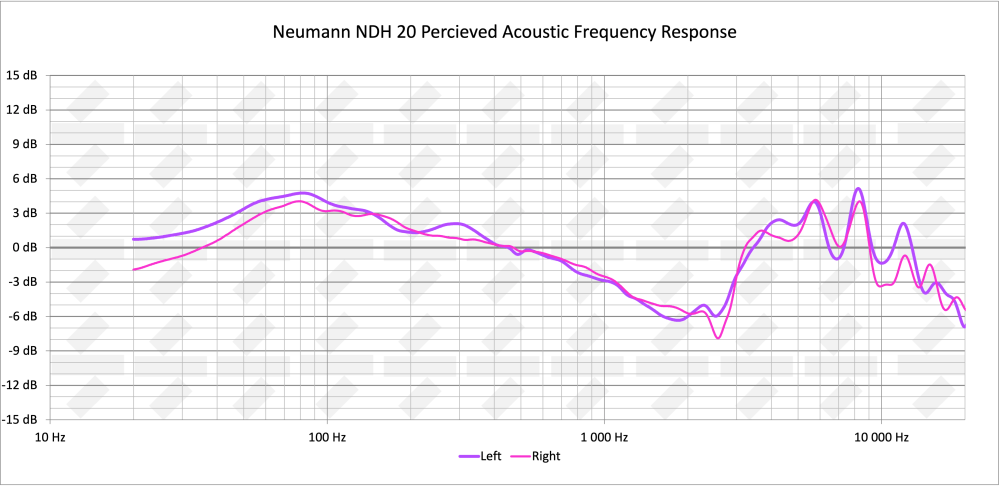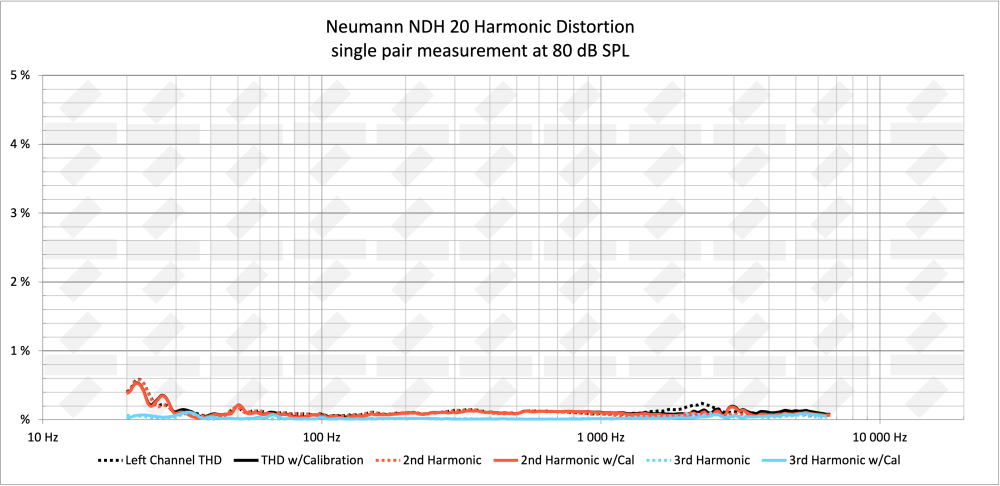When I first heard about Neumann getting into the headphone game, I was skeptical, maybe unfairly so. Was an established studio monitor and microphone manufacturer doing a headphone because everyone else is doing it? Was their mother-company Sennheiser using Neumann to brand their professional line of headphones? As it turns out – neither! The Neumann NDH 20 offers something of a unique sound signature that’s different from anything Sennheiser has put out. It’s not perfect, but let’s find out where it definitely shines!
- A well-engineered headphone driver with class leading THD performance and low-end extension
- Superb build quality
Pros list with SoundID Reference calibration
- Neutral frequency response
- Too much bass
- Upper mid scoop is pleasant, but can misguide your mixing decisions
- Highs a tad too hot
- Adaptiveness worse than some of it's rivals
Despite the high-ish impedance of 150 Ohms, the NDH 20 is a gentle load for just about any headphone output out there. High sensitivity coupled with high-ish impedance will make sure that your amplifier stage works at its most linear. 150 Ohms also mean that these headphones are fairly resistant to tonality changes due to the output impedance of your audio interface or headphone amp.
Built like a [German] tank! Almost all parts that are not padded are made out of cast aluminum with most surfaces being matte, thus fingerprints are not a problem. Most parts can be taken apart with a Torx driver and all padded surfaces seem to be swappable. Knowing Neumann, all parts for the NDH 20 should be readily buyable should they need replacement. Cables seem to be built well, however, their connection to the earcup uses a custom-molded plastic 2.5mm TRS jack. A more common connector would’ve been better as it would allow the user to easily repair and craft their own cables.
I own a pair of Neumann KH310 monitors, so I was a bit biased to what their headphones could sound like. My expectation was neutral, even boringly so with a scary good resolution that reveals itself once your ears get accustomed. Once I tried the NDH 20, I was surprised! Bottomless low-end extension with some “belly” and no trace of the usual “pro” hyped highs. The measurements partially confirmed my impressions. Highs are accentuated, but no mt. Beyer. While fun to listen to, the bass emphasis on the Neumann NDH 20 will force your hand to do thin-sounding mixes. Upper mids are scooped which usually robs distorted e-guitars of their bite, again biasing the engineer (or guitarist) to add too much crunch. Low THD throughout the frequency range means the NDH 20 has a terrific resolution, but bass boost muddies up the mids a bit. Overall the signature is a bit too scooped to be used for mixing without reservations or calibration.
Overall very good with around 1.5 dB imbalance in mids which can mess with some surgical positioning, but you can meet worse in other more popular headphones. The imbalanced low-end extension looks worse than it really is. You’re probably doing everything in mono under 100 Hz and even then the ear isn’t too sensitive to position changes this low.
The all-aluminum chassis on this Neumann headphone is not light, but a far cry away from the heavyweights like Audeze which go over half a kilo. The fit is well done with no pressure hot-spots due to weight or clamping. Cable microphonics on the NDH 20 can be troublesome at times, but that’s more of an on-the-go issue.
This is a tough one, as the Neumann NDH 20 isn’t exactly affordable. There are less costly options with better overall tonal balance, but worse THD performance. These aren’t the closed-back Sennheiser HD 650, everyone probably was expecting, but with some frequency correction, the NDH 20 can be a solid 8.
What THD? The NDH 20 driver plays super clean, which means superb resolution. And it takes calibration like a champ.
How accurate and consistent is the correction effect among different listeners?This perhaps is NDH 20 greatest weakness – adaptiveness is worse than some of its rivals. The perceived upper mid-range will change a bit depending on who’s wearing them. Sadly, this means that calibration accuracy will not be perfect, so as a professional monitoring tool NDH 20 will not be the most reliable one.
How much do they differ pair to pair in terms of frequency response?Based on our experience, they do not differ a lot from pair to pair. There could be a slight difference in high and high-mid frequency perception, otherwise, they sound very similar.
Rating
Conclusion
A very decent tonal response for a closed-back headphone, no closed headphone coloration, but subpar adaptiveness, too much low end and scooped upper mids stop them from reaching greatness.
Final Rating
Calibration Enabled
Calibration






